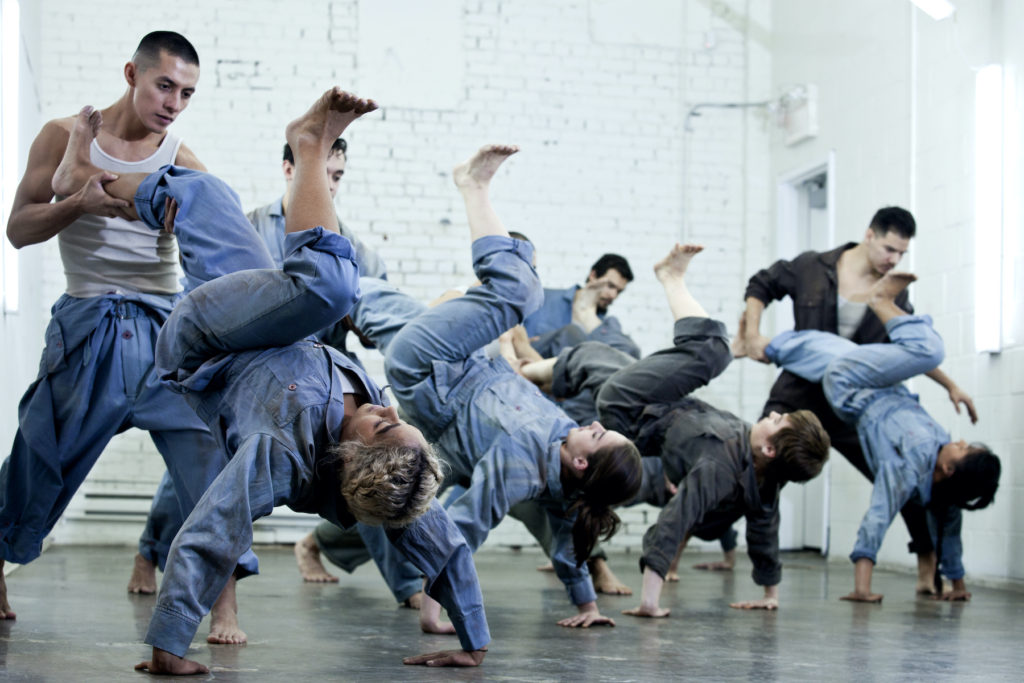
By Philip Szporer
Victor Quijada recalls a key incident from his late teens quite clearly. His girlfriend at the time, a classically trained ballet dancer, was a huge fan of hip hop. After introducing her to the Los Angeles freestyle cypher world he knew so well, she said, “I wish I could dance like that.” For Quijada, this was a eureka moment, having someone who shared his passion for dance, but from outside his circle, making him examine the form itself.
It was the early 1990s, and the hip hop/street dance scene wasn’t as crystallized or dogmatic as today, Quijada says. “We were exploring and inventing and questioning what hip hop dance could be.” Enrolled at Los Angeles High School for the Arts, where under his teacher and mentor, postmodernist Rudy Perez, he was learning about minimalism and surrealism, he says he began “trying to sprinkle some of that [experimental] ideology into the cypher [the gathering of street dancers in a circle].” Working with concepts that dealt with the manipulation of time and duration fuelled his interest in interpretation and decision-making, the use of beats, rhythmic variations, and accompaniment.

Fast-forward to the mid-1990s, and Quijada is in New York dancing for Twyla Tharp and Eliot Feld. But in the cypher, he says, “I would unleash unlimited amounts of creativity and mastery of my body in this other way.”
In 1998, a broken foot set in motion major questioning around the idea of making dances. A duet based on freestyling ideas premiered at the small Joyce SoHo studio space. Later, based in Montreal and a member of Les Grands Ballets Canadiens, he created a “very contemporary ballet” for the company’s annual choreographic workshop.
RUBBERBAND was founded in Montreal in 2002. Quijada’s new company served as a testing ground where he could marry his distinct movement ideals and the essence of his first love, hip hop culture and street dance, with the formal aesthetics of stage dance, more particularly contemporary dance.
The RUBBERBAND Method, Quijada says, is very much wrapped up in his process of becoming a choreographer. “The method exists because I was trying to find a way to guide dancers so they could get stronger and go further in understanding something that was happening in my body.”

In 2004, covering one of Quijada’s early evening-length works, Slicing Static, I wrote about his ongoing quest to bring street dance movement into the theatre. “Do we keep it raw, exactly as it was? If you do that, it has no place in the theatre. If you do, it needs to transform,” he said at the time. “I didn’t want to get stuck in dogma. But I did want to create dance that’s more than just poses. I see [my dance] fulfilling itself in a fuller classical expression. Classical break is the bastard reflection of classical ballet.”
The RUBBERBAND Method evolved, blending these forms, as well as being informed by other techniques such as release and Gaga. “I’m focused on the way we use space around us and in connecting to the surface of the body,” Quijada says. “It’s about general awareness systems and getting bodies into this axis; how we use forms and sensations, and make different [movement] decisions.” Fundamentally, the technique is about “how we interact with the environment, those in the environment, and our own bodies.”
Refined over the last decade, this movement language, which he teaches worldwide, is also a philosophy. It supports a driving fluidity, whereby the three-dimensional surfaces of the body push and carve through the space, taking the body out of the upright position, upending the vertical so aligned with classical ballet or modern dance techniques, calling on dancers to find the horizontality and inverted planes of a movement or phrase. Whether standing, doing floorwork, or partnering, he explains, dancers begin to re-conceive weight distribution around the centre of gravity. Agility appears in inverted positions supported by hands, elbows, and shoulders. “The body in a dynamic, prolonged horizontal axis allows for spins and rotations that are off of their axis,” he says.
In this matrix of movement, the space around the dancer is not empty. One key pillar of information called “atmospheric interaction” allows dancers to choose the density of whatever imaginary substance inhabits the space around them. The changeable viscosity can be described as thin as smoke or as hard as concrete, and everything in between. Secondly, there’s always an anchor point, whereby dancers don’t just push but also pull against the floor. It creates a different tension in the body to pull against an imaginary anchor. The third vital component, photographic focus, resets the dancer’s sense of what is being viewed, treating the head like a camera, and thus resets their intentions.
Whether it’s with ballet dancers for whom, he says, “the floor is a new avenue,” or breakers who achieve “a new awareness of partnering,” Quijada is building bridges between forms and forging new pathways. “What I’ve invented is how different ends of the spectrum come together.”

